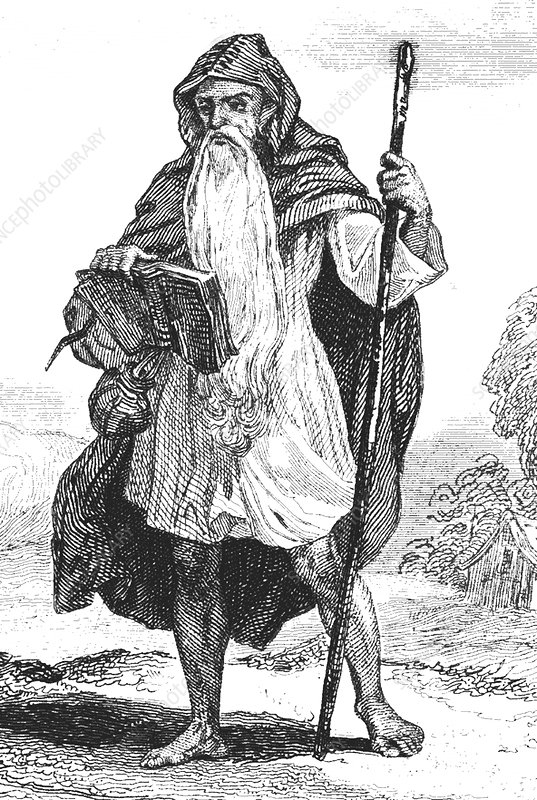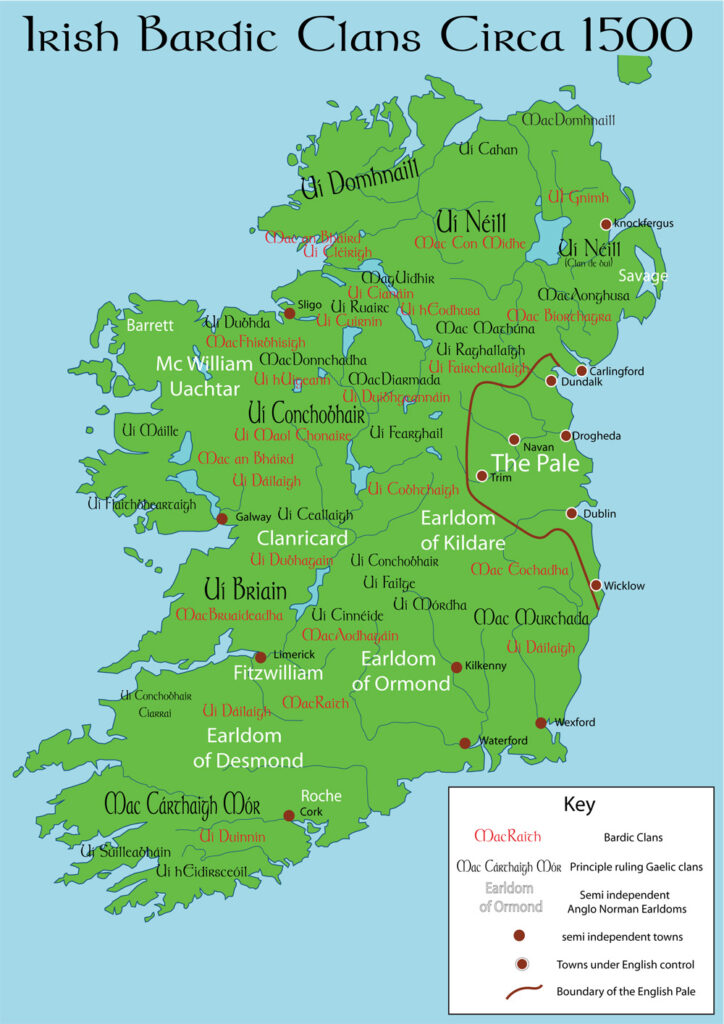The bardic tradition has its roots in the much earlier druidic practices of the pre-Christian Celts. Druids were the holders of knowledge, though perhaps best known as religious leaders, they were also legal authorities, adjudicators, lore keepers, medical professionals, and political advisors.

In old Irish they were called druí, in middle Welsh dryw which literally meant a seer or sorcerer. The Romans were very fearful of these druids and wherever they conquered in Gaul and Britain they rigorously suppressed them.
Most accounts describing the druids come from Roman sources, so their descriptions are biased but they do say that both men and women could be druids and it could take up to twenty years to qualify for the role. In Irish there are several words for female druids, such as bandruí “woman-druid”, found in tales such as the Táin Bó Cúailnge, Bodhmall, featured in the Fianna Cycle, and one of Fionn mac Cumhaill’s childhood caretakers;and Tlachtga the daughter of the druid Mug Ruith who, according to Irish tradition, is associated with the Hill of Ward, site of prominent festivals held in Tlachtga’s honour during the Middle Ages
With the coming of Christianity in Ireland the religious role of the druids ended but they kept their secular role, now known as ollamhs, by remaining as the legal authority, lore keepers medical professionals and political advisors.
Their power remained great and they were feared for their satire and curses. It was believed that a well-aimed bardic satire, “glam dicenn”, could raise boils on the face of its target!
This oppression became intolerable and in 574 AD at the convention of Drum Cetta, the High King of Ireland, Aed mac Ainmirech, along with the nobles of Ireland, decided to suppress the whole order. However St Columcille interceded on their behalf determining that one ollamh could be kept by each ruling chieftain. Strict rules were laid down on their training and future practices and they were ordered to keep schools and were given land for their maintenance.
The old Gaelic order ended with the onset of the Tudor conquest in the 16th Century. The English authorities were conscience of the power of these ollamhs, following the dictum that the” pen is mightier than the sword” and this social class were rigorously suppressed along with many of their chieftains. Those clan chiefs that remained were banned from keeping ollamhs. Banished from their lands many like Cú Coigcríche Ui Cléirigh continued to follow their profession but found it difficult in these new circumstances, starved of patronage and by the early 18th Century few remained. However some parts of this social class remained by making a living as “fili” poets and as musicians into the 19th Century.

Most of their written work remained, kept as precious objects by their descendants but no doubt much was lost. It was lucky that some foresightful people like George Petrie saw the need to preserve these works for posterity and began to purchase manuscripts for the Royal Irish Academy who were able to restore and maintain them for future study.
